What Breeds Make the Best Sled Dogs?
The Samoyed, Alaskan Malamute, Siberian Husky, Chinook are some of the most well-known of the sled-dog breeds, and with good reason.
Sled dogs probably evolved in Mongolia between 35,000 and 30,000 years ago. Scientists think that humans migrated north of the Arctic Circle with their dogs about 25,000 years ago, and began using them to pull sleds roughly 3,000 years ago.
There are historical references to dogs used by Native American cultures dating back to before the first Europeans made land. There were two main types of sled dogs: one kept by coastal cultures and the other by people living in the interior. In the mid-1800s Russian traders following the Yukon River inland and acquired sled dogs from the villages along its shores.
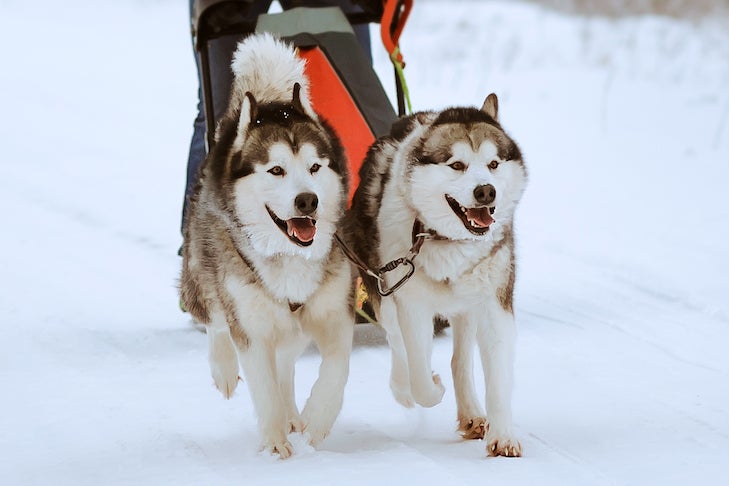
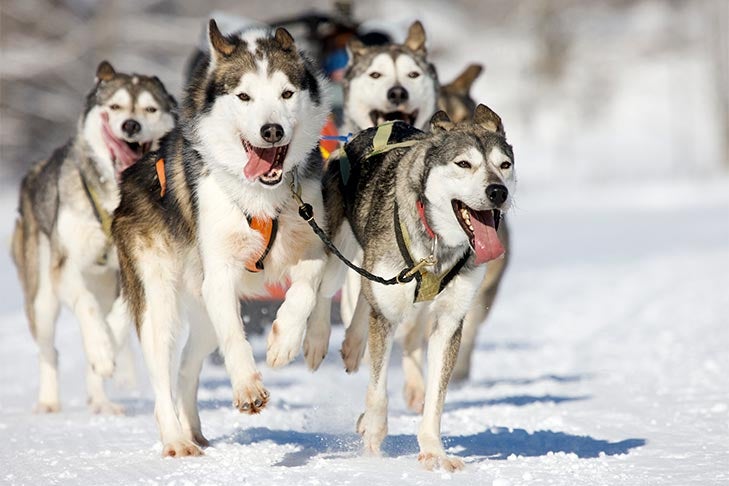
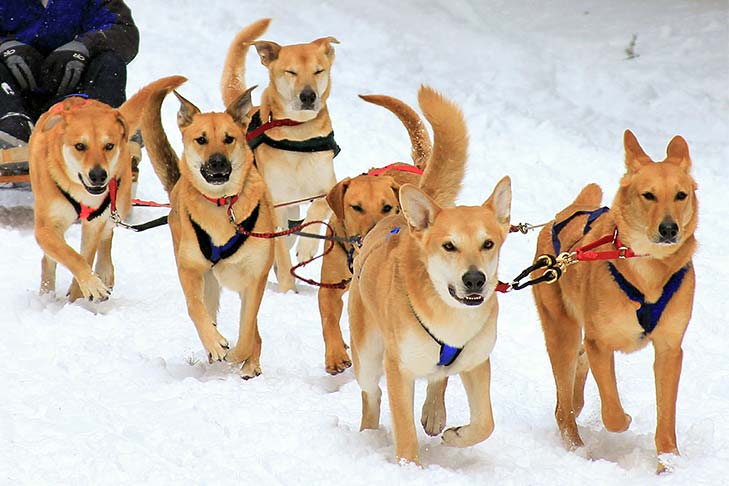
The first formal sled-dog race wasn’t held until 1850, from Winnipeg, Manitoba, to St. Paul, Minnesota. But sled dogs’ place in human history goes back thousands of years and served a much greater purpose than simple entertainment. Sled dogs served as a primary means of communication and transportation in harsh arctic weather conditions. Some scholars, in fact, believe that human survival in the arctic would’ve been impossible without the assistance of sled dogs. There are many significant moments in history in which sled dogs played an important role. A few notable ones over the last two centuries include:
The late 1800s and early 1900s was nicknamed the “Era of the Sled Dog.” After that, the hearty breeds worked at a variety of jobs, until airplanes, highways, trucks, and snowmobiles effectively put them out of work. (Sled dogs today are still used by some rural communities, especially in areas of Alaska and Canada, and throughout Greenland).
But they didn’t stop mushing once their jobs dried up. Sled-dog breeds and their outdoorsy owners mush for recreational purposes, and the fanatically devoted teams participate in events like the Iditarod and the Yukon Quest. Billed as the “World Series of mushing events” the Iditarod is 1,100 miles of sheer endurance, spanning about 10 or 11 days, depending on the weather.
It begins with a ceremonial launch in Anchorage, Alaska, the morning of the first Saturday in March, with mushers running 20 miles to Eagle River along the Alaskan Highway, giving spectators a chance to see the dogs and their mushers. The teams are then loaded onto trucks and driven 30 miles to Wasilla for the official start of the race. The winning team takes home a $50,000 prize. That’s a lot of premium kibble.
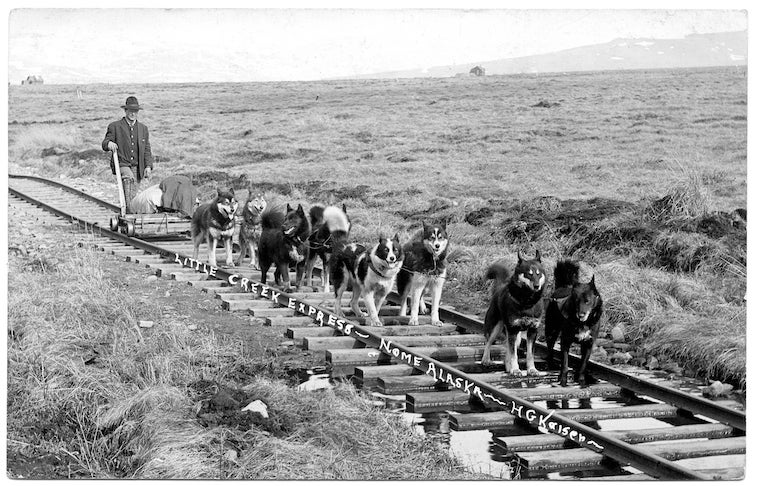
Perhaps the most famous sled dog of all was Balto, a jet black Siberian Husky, who was the lead dog of the sled dog team that carried diphtheria serum on the last leg of the relay to Nome during the 1925 diphtheria epidemic. There was serum in Nenana, but the town was 700 miles away, and inaccessible except by dog sled. A relay was set up, and 20 teams pulled together. Six days later the lifesaving serum reached Nome.
In 1995, Universal Pictures released the movie “Balto,” based on his life. It earned three out of four stars from the most famous film critic of the day, Roger Ebert. Today a bronze statue in Balto’s honor stands in Central Park.
While the lead dog of the 53-mile final leg, Balto, would become famous for his role in the run, many argue that it was Siberian Husky lead dog Togo, who was the true savior of the day. All told, the 12-year-old Togo traversed an astounding 264 miles, compared to an average of 31 miles each for the other teams.
Over time, with the help of historians, Togo began to garner the recognition he deserved. In 2001, Togo received his own statue in NYC’s Seward Park. In 2019, his story was retold in the riveting Disney+ movie Togo, starring Togo’s own descendant Diesel as the namesake Siberian.
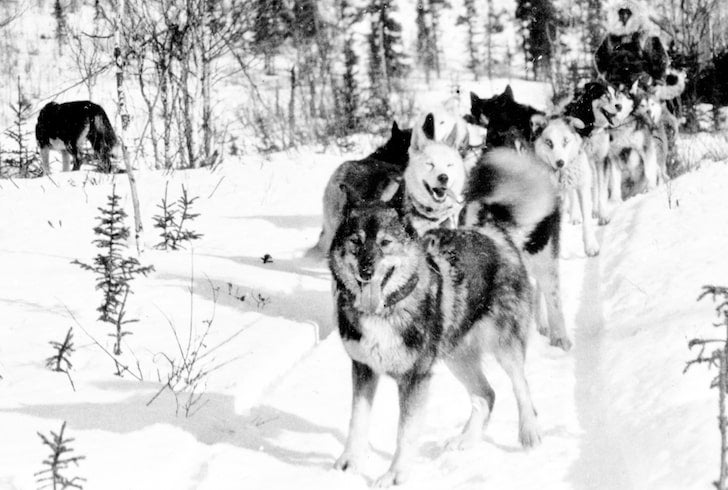
Clubs Offering:
What does it take to run hundreds of miles across packed ice and frozen terrain, for days and weeks on end, in arctic temperatures? That’s easy: A lot. A lot of grit, guts, and a laser-like focus on getting where you’re going.
The Top 12 Sled Dog Breeds
| Lifespan: | 12 – 15 years |
| Temperament: | Alert, friendly, gentle |
| Weight: | 40 – 60 pounds |
The Siberian Husky is the most popular of all the sled dogs and likely what most people think of first. This medium-sized dog is extremely powerful and has plenty of endurance. This breed once traveled more than 650 miles through Alaskan snow to deliver medicine and was able to do it in just five and a half days. These dogs are also friendly and enjoy being around children.
| Lifespan: | 12 – 15 years |
| Temperament: | Gentle and friendly |
| Weight: | 55 – 90 pounds |
The Chinook is an American sled dog that breeders created in New Hampshire, where it is the state dog. It’s a well-balanced and muscular dog that’s often a honey or gold color. It’s affectionate, playful, and will go out of its way to be with the children. It also gets along well with other pets and likes to learn new tricks. It’s reserved around strangers but won’t become aggressive.
| Lifespan: | 10 – 15 years |
| Temperament: | Lively, fun, affectionate |
| Weight: | 60 – 100 pounds |
The Labrador Husky is a medium to large dog with a distinctive wolf appearance. It’s not related to the Labrador Retriever. Instead, it gets its name from Labrador, Canada, where breeders created it. It’s an active dog well suited to big families with several members that will help keep it busy. It loves to play and clown around, so it’s a fun breed to own.